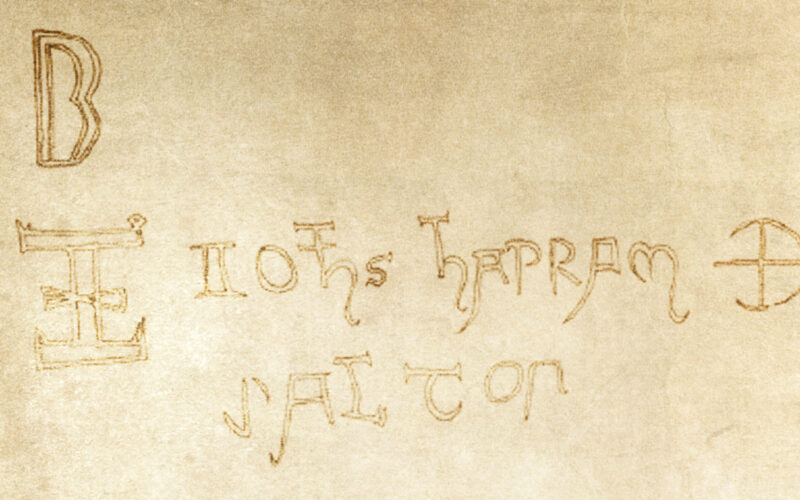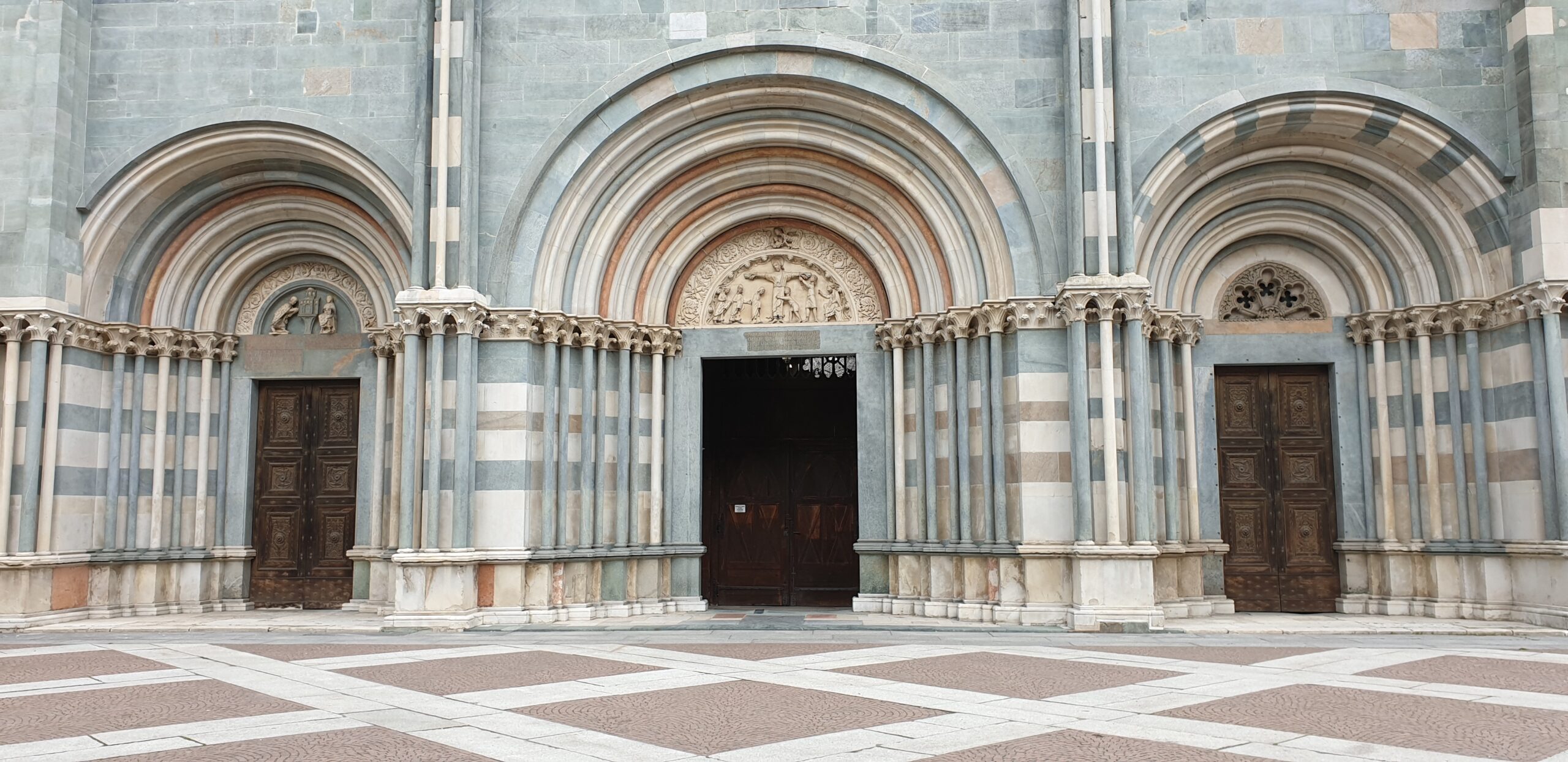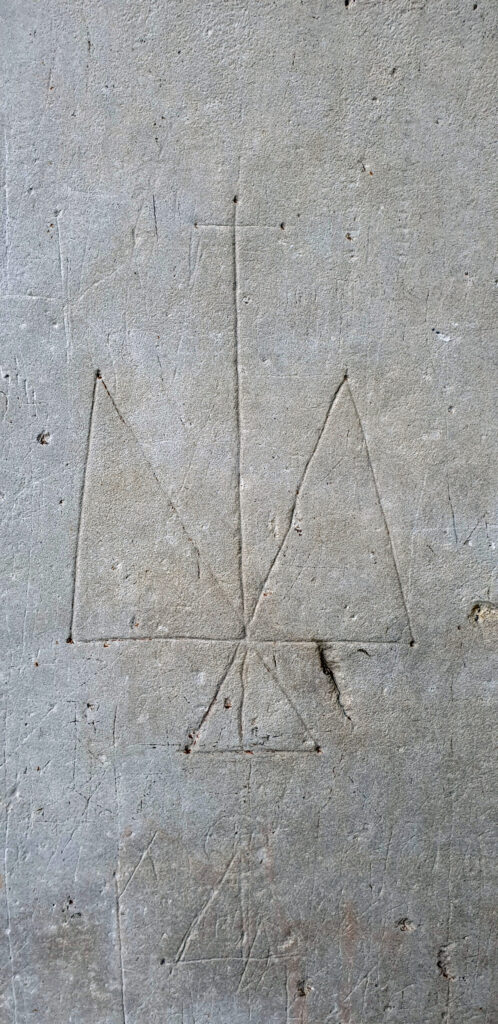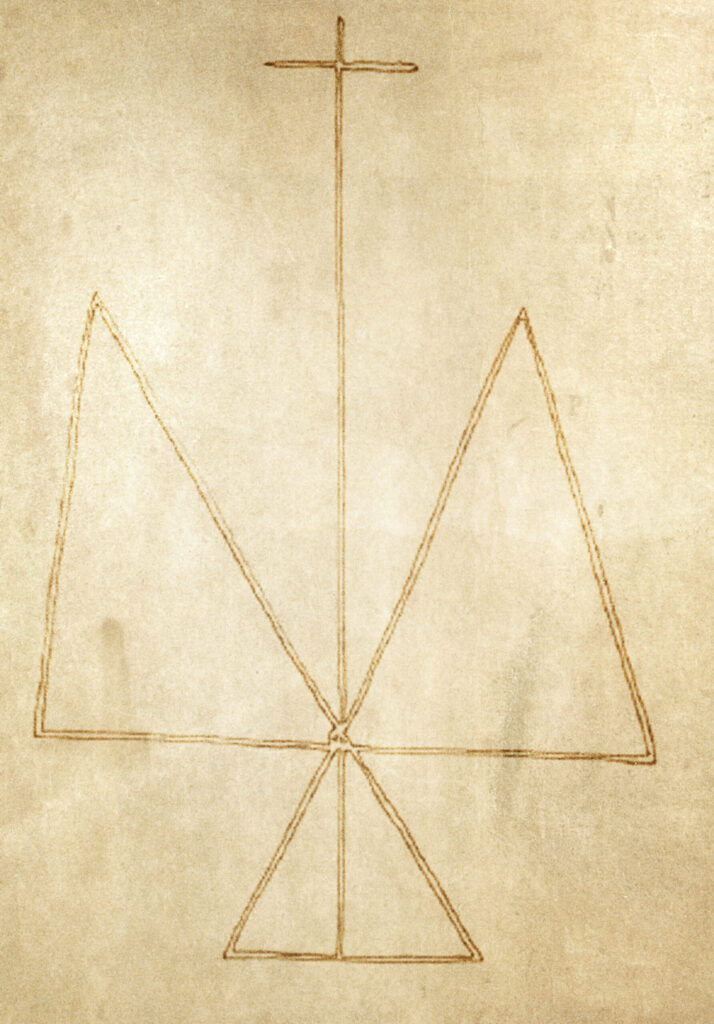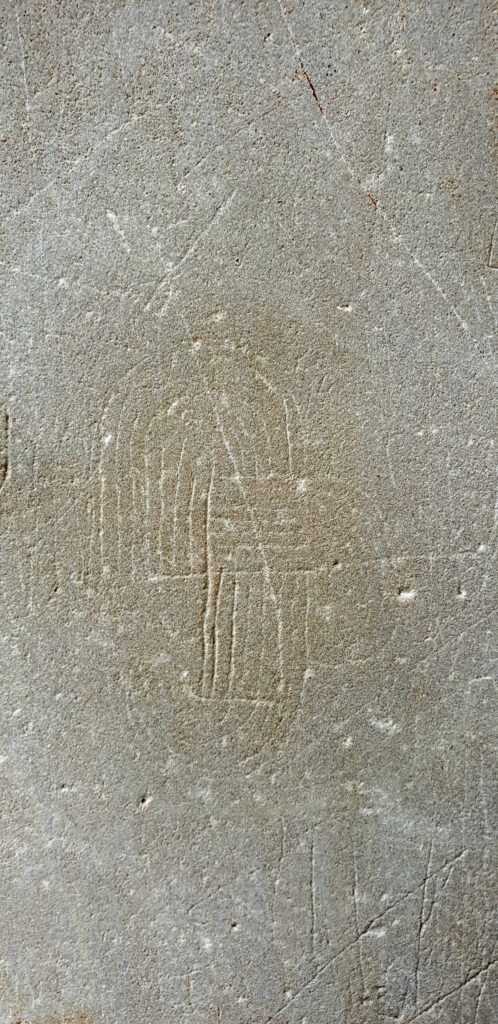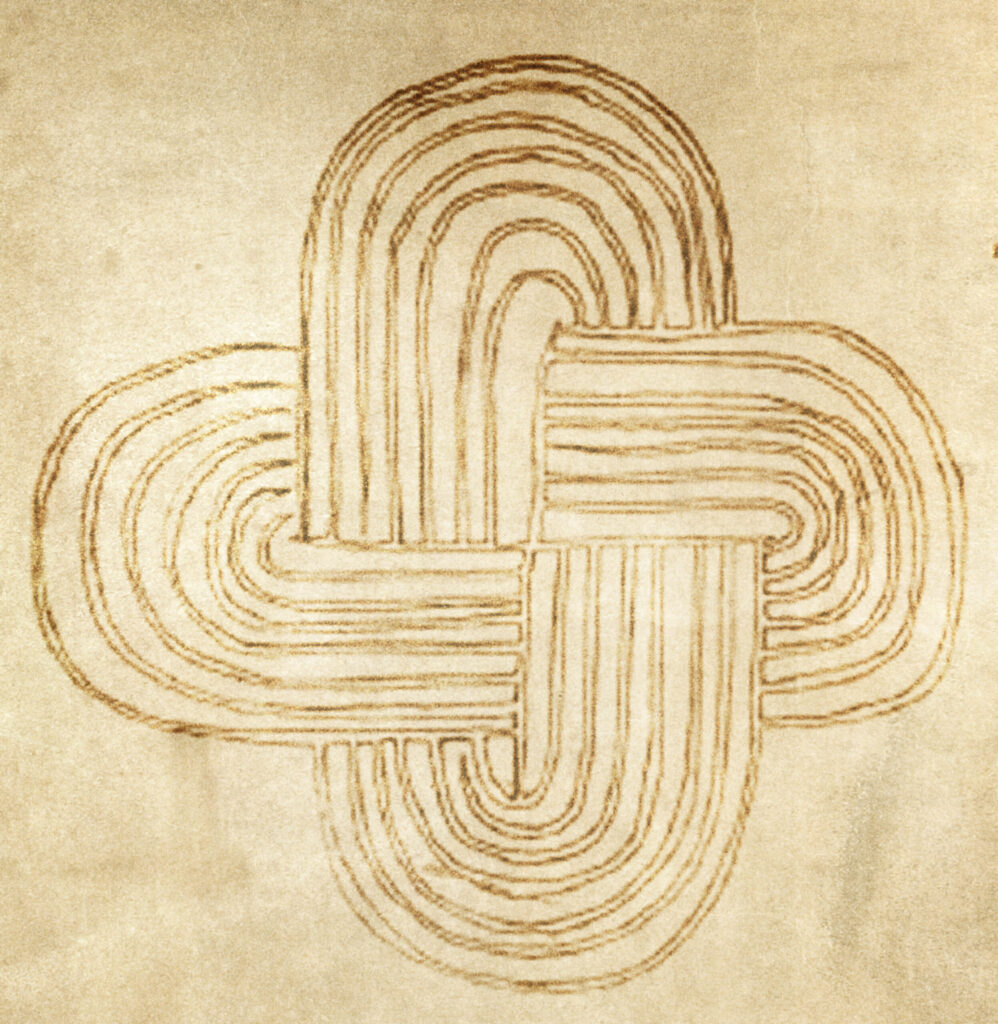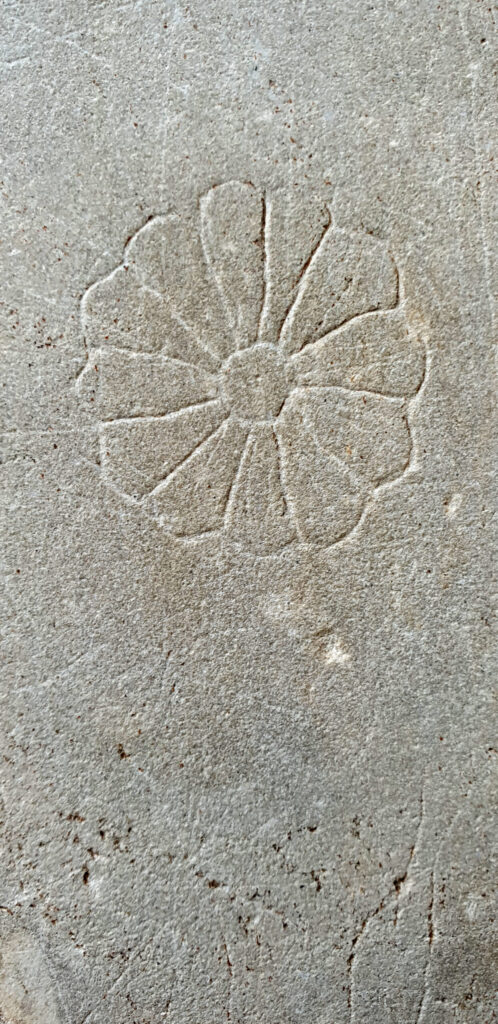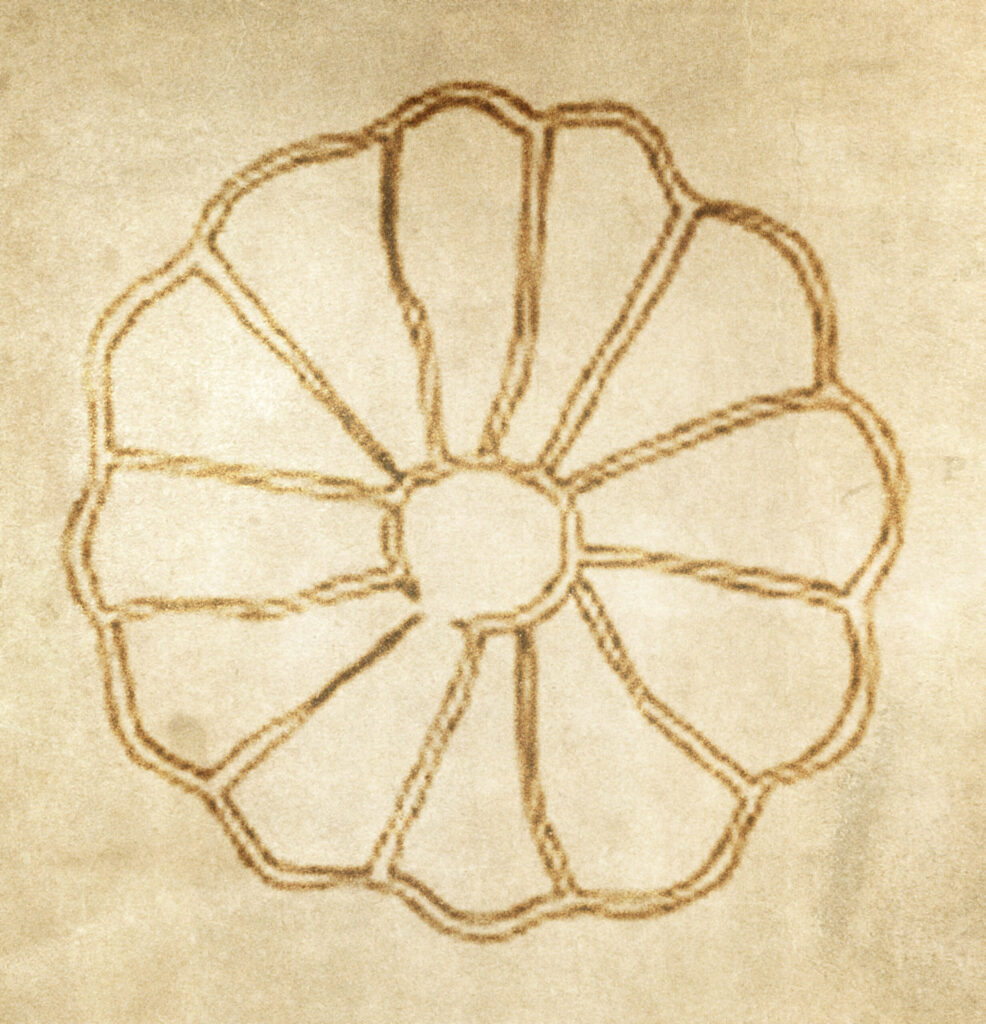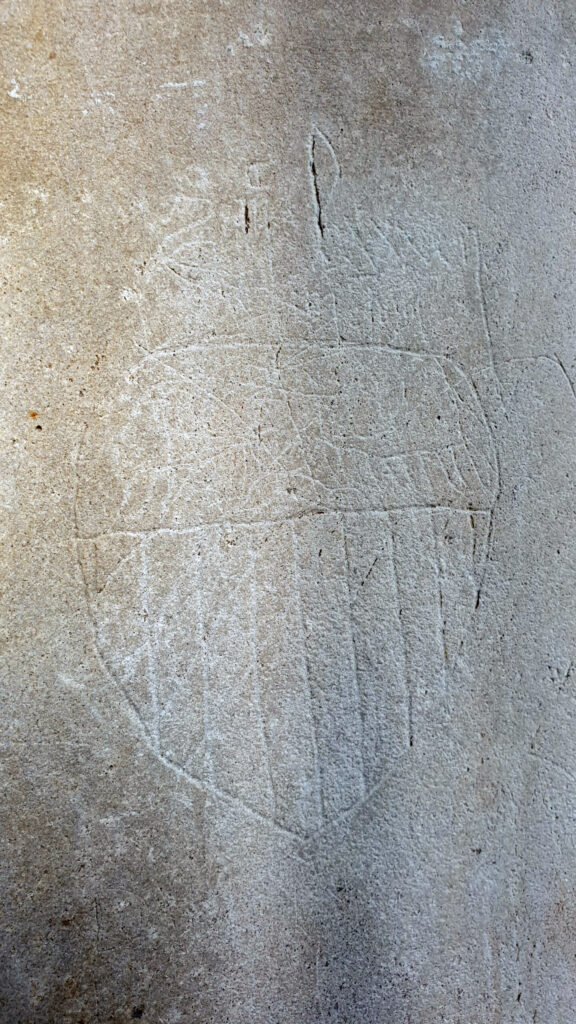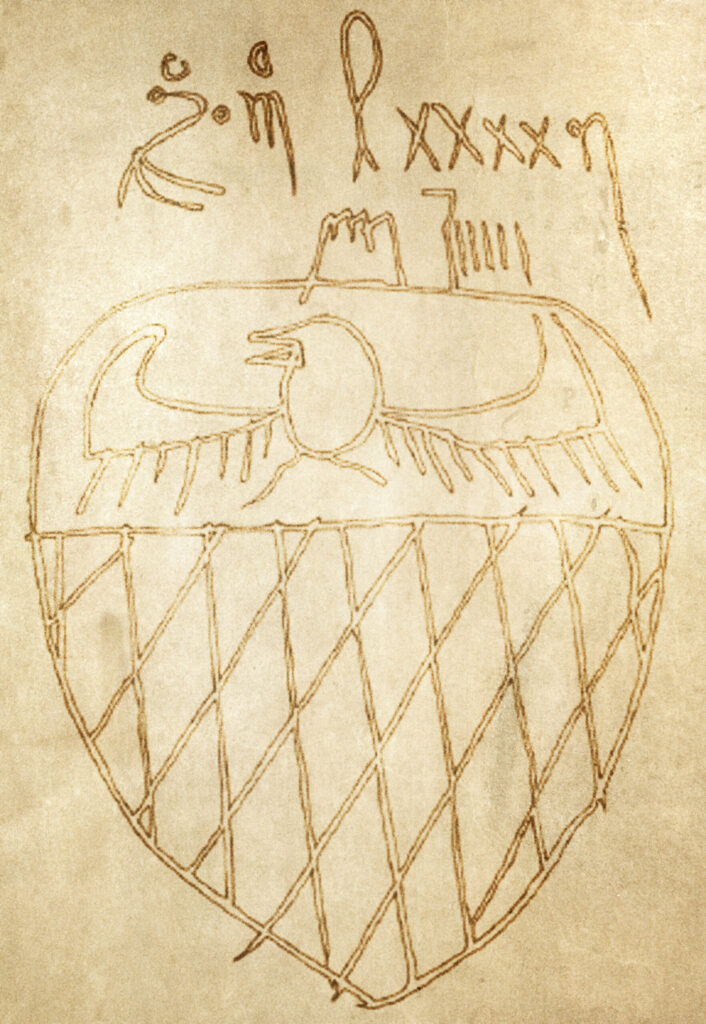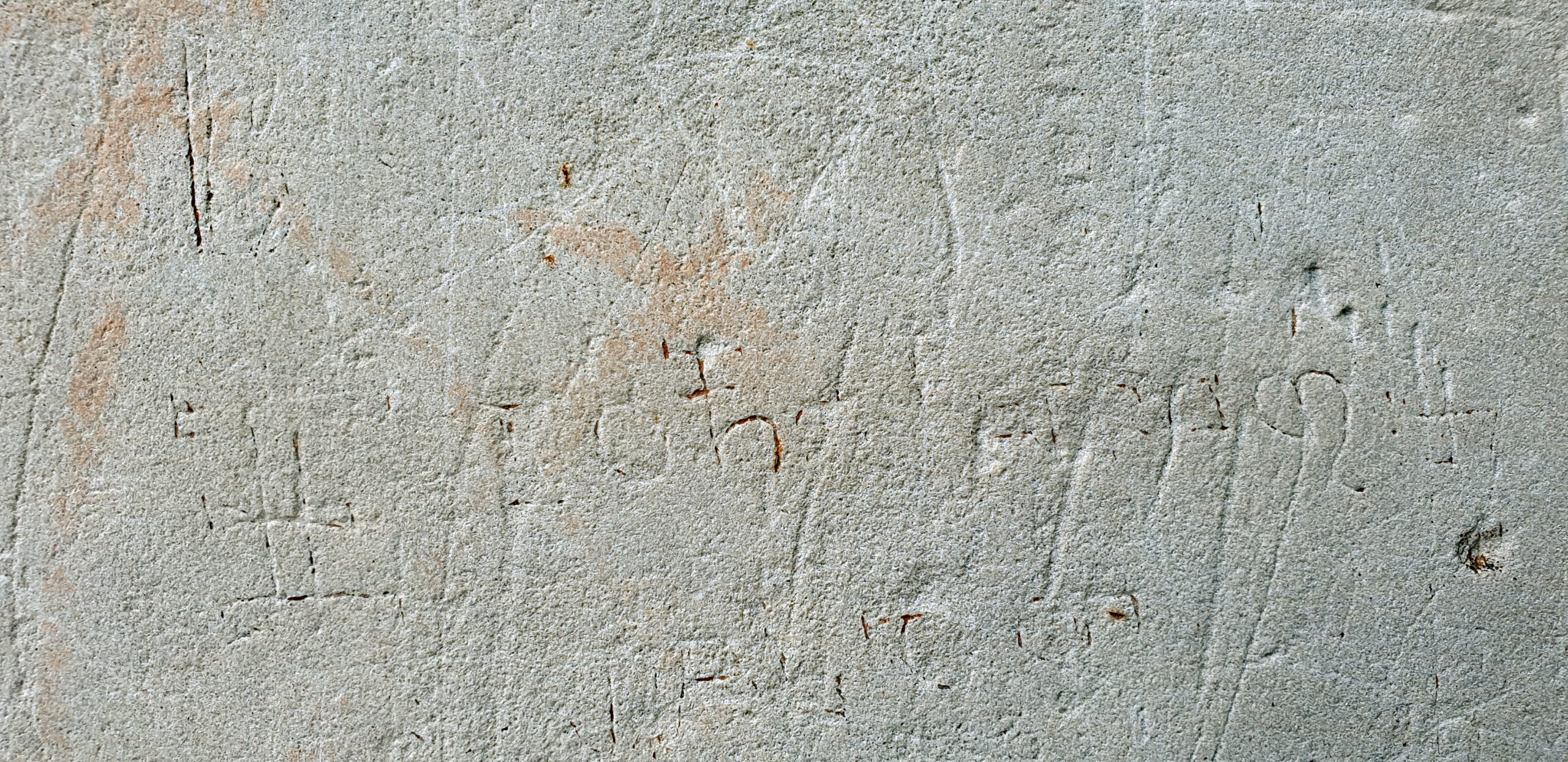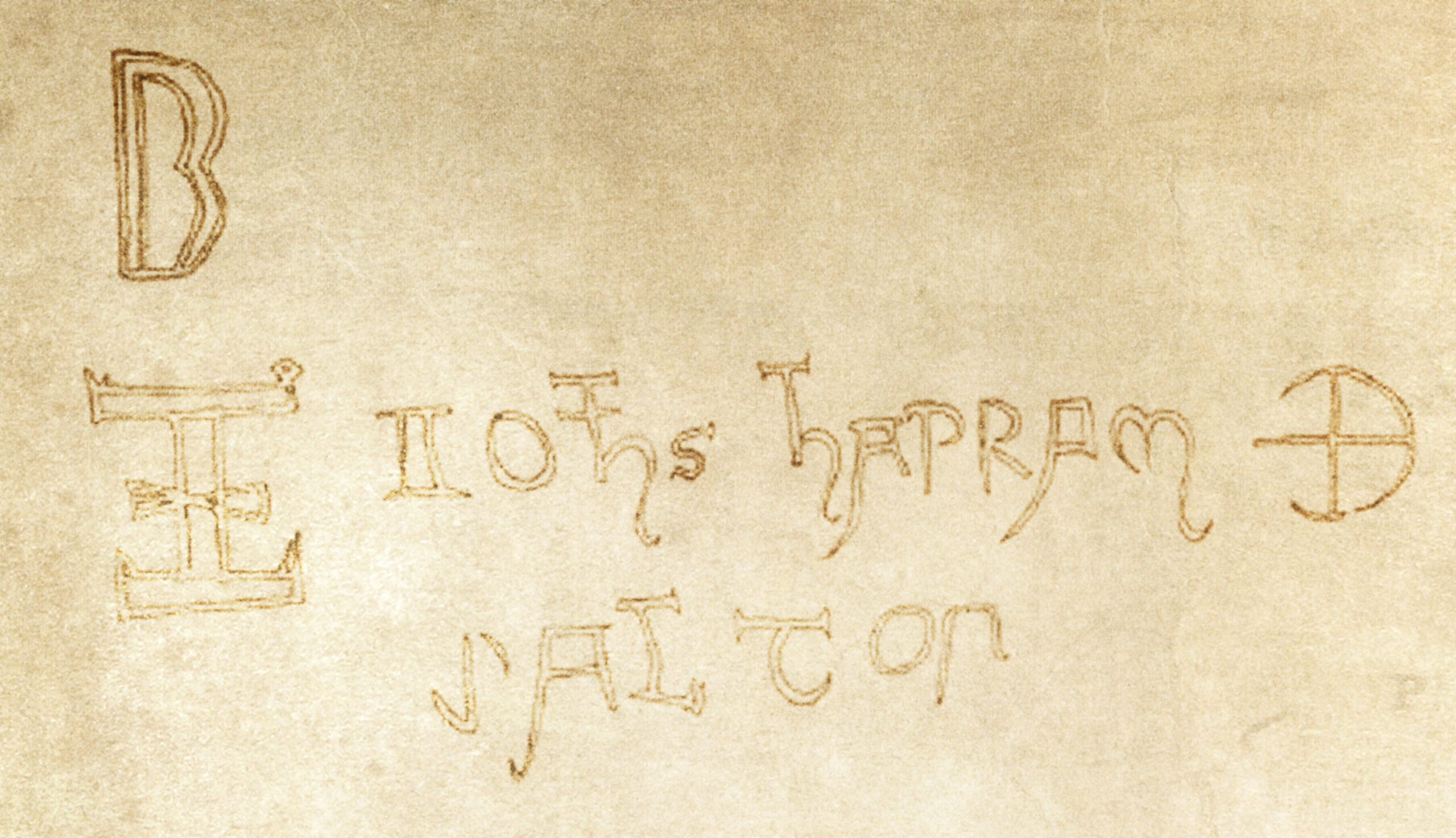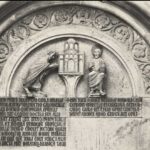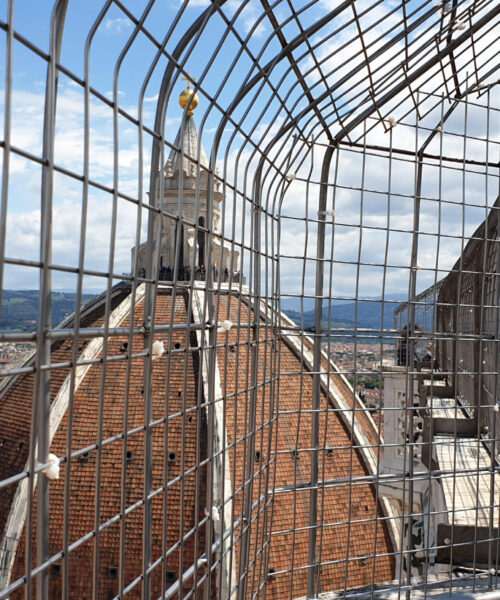The Basilica of Sant’Andrea in Vercelli, a splendid example of Gothic-Romanesque architecture, was built at the behest of Cardinal Guala Bicchieri between 1219 and 1227. This monument not only represents an architectural masterpiece but also houses precious medieval graffiti, a hidden heritage that deserves to be highlighted in tourist and historical guides.
On the occasion of the 800th anniversary of the basilica’s foundation, the Artes Liberales Association of Vercelli displayed photographic reproductions of some of these graffiti in the exhibition “Harmonies between Romanesque and Gothic.” Documented by the Vercelli Archaeological Group, these include symbols, inscriptions, and decorations that offer a fascinating glimpse into medieval life.
Subsequently, the “La Rete” Association also integrated these graffiti into their guided tours of the abbey, enriching the visits with detailed information gathered from local history experts and enthusiasts.
During the Middle Ages, the term “graffito” referred to symbolic drawings and brief inscriptions made on hard surfaces like plaster, stone, terracotta, and metals. These graffiti, engraved with pointed tools, were particularly common in eras and environments with high literacy rates. With the decline of schooling around the 6th-7th century, graffiti became less common, persisting mainly in burial or religious sites.
In the 13th century, graffiti reemerged as symbols of testimony. Pilgrims and occasional visitors would engrave their names or brief expressions of reverence near the tombs of saints. The Abbey of Sant’Andrea, located along the Via Francigena and equipped with a renowned hospice, was a crucial stop for pilgrims heading to Rome or the Holy Land. Many of them left marks of their passage on the basilica’s stone, engraving names, heraldic crests, or symbols indicating their destination.
Among the preserved graffiti, one of the most fascinating is a probable symbol of Mount Calvary, although this is usually represented with a central triangle topped by a cross. Another significant example is the Solomon’s Knot, an ancient symbol present in many cultures, representing divine inaccessibility and synthesizing various symbols like the Greek cross and the labyrinth.
Other graffiti include a floral motif with twelve petals, common in medieval and Renaissance ceramics, and a heraldic motif depicting a lozenge-shaped shield with a crowned eagle, probably dating back to the 15th century
The most interesting and deteriorated graffiti is a probable notarial signature, engraved by an educated man. Despite the difficulty in deciphering it, it is hypothesized to belong to a certain Johannes Habram (M)alto(a), dating to the 13th-14th centuries.
Unfortunately, the various cleanings of the basilica’s facade have rendered some of these graffiti almost illegible. It is essential to pay more attention during restorations to avoid erasing these precious testimonies of the past, which, although not considered works of art, hold immense historical and cultural value.
The medieval graffiti of the Basilica of Sant’Andrea in Vercelli are unique and fascinating testimonies of the past. These marks, carefully and devoutly engraved, tell stories of pilgrims and visitors, offering a valuable glimpse into medieval life. Preserving and enhancing them is a duty we must fulfill to avoid losing these indelible traces of our history.

